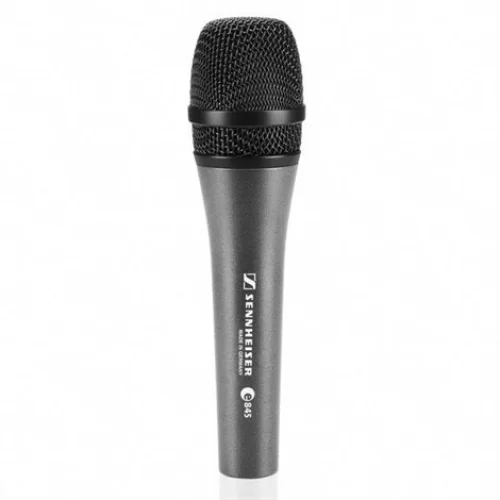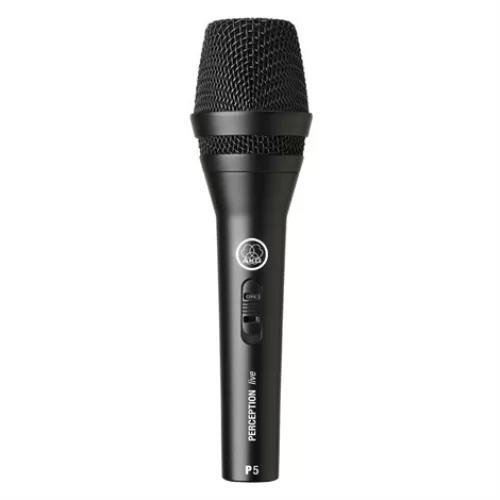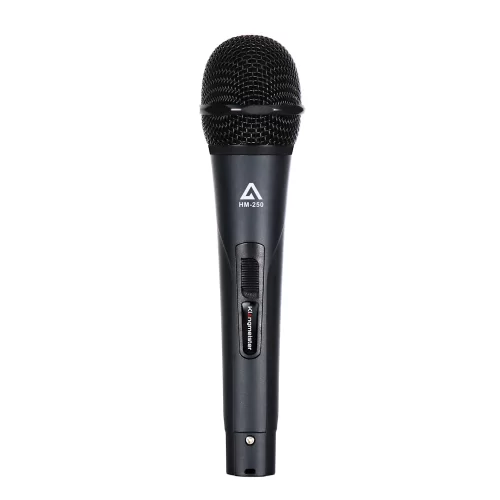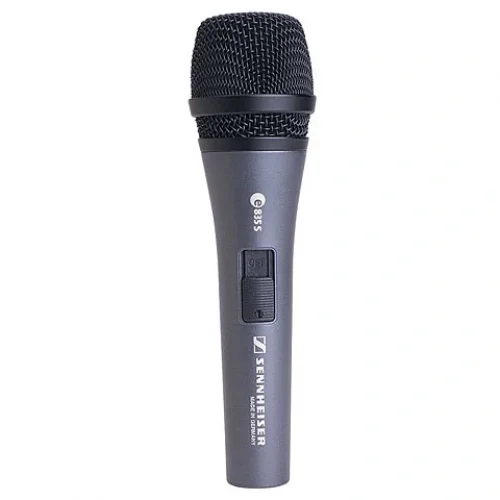Tip: Süperkardioid el tipi elektret kondansatör vokal mikrofonu
Frekans Tepkisi: 50 Hz - 18 kHz
Kutuplama Deseni: Süperkardioid
Çıkış Empedansı: 150 ohm (gerçek empedans)
Hassasiyet: -52 dBV/Pa (2.5 mV)
Maksimum SPL: 140 dB SPL
Dinamik Aralık: 113 dB
Güç Gereksinimi: Fantom güç (11-52V DC)
Kapsül: Gelişmiş kapsül darbeye dayanıklı sistem
Kasa: Dent-resistant çelik örgü ızgara ve emaye kaplı metal alaşım yapı
Ağırlık: 207 gram
Profesyonel Ses Güçlendirme: Canlı performanslar ve sahne kullanımı için idealdir.
Yayın ve Stüdyo Kayıt: Yüksek kaliteli kayıtlar için uygundur.
Turne ve Saha Prodüksiyonu: Dayanıklı yapısı sayesinde yoğun kullanım için uygundur.
Yumuşak Frekans Tepkisi: Olağanüstü yumuşak frekans tepkisi ve yüksek ses basınç seviyesi (SPL) özelliği.
Kontrollü Düşük Frekans: Yakınlık etkisini telafi eden ve "boomy" sesi önleyen kontrollü düşük frekanslı düşüş.
Geri Bildirim Öncesi Yüksek Kazanç: Süperkardioid kutup paterni, geri bildirimden önce daha yüksek kazanç sağlar ve arka plan gürültüsünü azaltır.
Düşük Bozulma: Geniş dinamik aralık ve düşük bozulma özellikleri.
RFI ve Elektromanyetik Gürültüye Karşı Duyarlılık: RFI, elektrostatik ve elektromanyetik uğultuya karşı düşük duyarlılık.
Shure BETA 87A, profesyonel ses güçlendirme, yayın ve stüdyo kayıt uygulamaları için mükemmel bir seçimdir. Dayanıklı yapısı ve üstün performans özellikleri ile sahne ve stüdyo kullanımı için idealdir
Shure BETA 87A ile Shure Beta 87C arasındaki Farklılıklar
Kutuplama Deseni: Beta 87A süperkardioid, Beta 87C ise kardioid desenine sahiptir. Süperkardioid desen, yanlardan gelen sesleri daha iyi reddederken, kardioid desen daha geniş bir açıdan ses alır
Çıkış Empedansı: Beta 87A'nın çıkış empedansı 150 ohm iken, Beta 87C'nin çıkış empedansı 100 ohm'dur
Kullanım Alanı: Beta 87A, sahne monitörleri yanlarda olduğunda daha iyi performans gösterirken, Beta 87C, monitörlerin doğrudan arkanızda olduğu durumlarda daha iyi performans gösterir
Her iki mikrofon da yüksek kaliteli ve profesyonel kullanıma uygundur, ancak kullanım alanınıza ve ihtiyaçlarınıza göre seçim yapmanız önemlidir.
| Ürün Grubu | Mikrofonlar (Kablolu) |
| Mikrofon Çeşitleri | Solist / Vocal |









